Patrons of yesterday and today: the story of Genoa's Brignole-Sale collection on full display again
Among this year’s noteworthy events in the field of art, it is necessary to point out one that has passed perhaps a bit under the radar, but which is interesting for several reasons. It is the exhibition to the public, at the Palazzo Rosso museum in Genoa, of the nucleus of works from Maria Brignole-Sale ’s original collection that still lay in the storage rooms of the Strada Nuova Museums. We, too, come to it guiltily late, first because the presentation to the public took place in mid-December 2015, and second because, moreover, we went to see the works for the first time three months ago, but until today we had not yet managed to write anything on the subject. No big deal: it will mean that we will justify ourselves (grasping at straws a bit, actually) by saying that we like to write things down slowly.... !
Before seeing what happened in December, it is necessary to brush up on a little history: in 1874, Maria Brignole-Sale, Duchess of Galliera and member of one of Genoa’s most prominent families, and her son, Marquis Filippo De Ferrari, donated the sumptuous Palazzo Rosso (now home to one of the city’s as well as Italy’s most important museums) to the City, together with its furnishings, library and rich picture gallery, which includes dozens of works of art by great masters. The transfer is dated January 12, 1874, and, we read in the deed, the Duchess of Galliera and the Marquis De Ferrari make the donation with the purpose of publicly attesting to their senses of love for the City of Genoa, and zeal for everything that can increase the decorum and usefulness of its inhabitants and its fame among outsiders. The City of Genoa therefore opened the palace to the public by displaying all the paintings from the Brignole-Sale collection. The bombings of World War II, however, forced the then director to rearrange the museum’s itinerary, which from this point forward would give up a dozen works destined to remain in storage. This brings us to 2015: the director of the Strada Nuova Museums, art historian Piero Boccardo, plans to reexhibit the works left out of the rearrangement. Restoration is needed, however, and a sponsor is needed to take on the undertaking (relatively modest, because the work amounts to about thirty thousand euros). The “challenge” is being taken up by Studio Legale Rubini, which moreover celebrates its twenty-five years of activity in 2016: the firm thus links its name to the last piece that is missing to see “the nucleus of paintings in Palazzo Rosso” again, to use the words of Piero Boccardo himself, “displayed to the public and scholars in its entirety.”
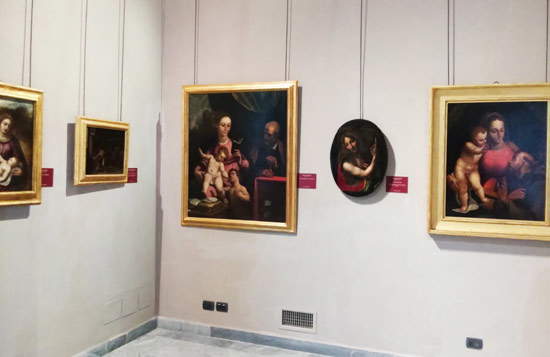 |
| Some of the works again on public display in the rooms of Palazzo Rosso |
The works are therefore being displayed in an exhibition that opens in December and is set up in the last two rooms of the Palazzo Rosso itinerary. The exhibition is titled Patrons of Yesterday and Today: those of yesterday are the Duchess of Galliera and the Marquis De Ferrari, whose munificent act enriched the city of Genoa with an artistic heritage of considerable size and very high quality, and today’s patronage is instead fully represented by the Rubini Law Firm whose generosity enabled the completion of the project. A generosity, it should be noted, connoted by great gentility, since the intent was to support an operation that may not have launched the firm’s name on the front pages of national newspapers, but which had a high cultural value, for several reasons. First, because it allowed the entire Brignole-Sale collection to be returned to the public, so that visitors to Palazzo Rosso could admire it in its entirety. Then, because several works needed, as anticipated, restorations that had the purpose of improving their legibility and enabling their conservation recovery, since in some cases the paintings were in a less than optimal state of preservation: this is, moreover, one of the reasons why some of the works had remained in storage. Finally, because publicly exhibiting works brought out of storage also means making life easier for art historians intent on studying them.
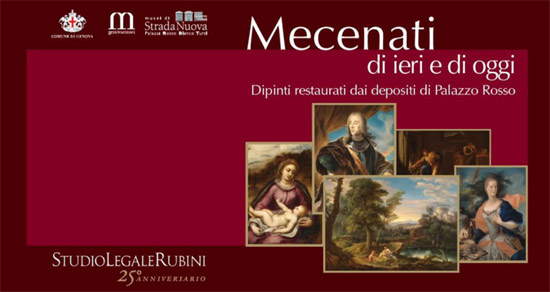
It should be emphasized that these are certainly not great masterpieces: they are mostly works by minor artists, and for some of them we do not even know the author’s name. This is also to “dispel the myth” (and it was even written on the press release: a sign that evidently the subject is heard!) that the deposits of Italian museums hold unimaginable masterpieces of enormous value: the truth is that in the deposits there are almost always works that cannot be exhibited for conservation reasons, or works of minor importance that are not shown in the itineraries open to the public for reasons of space (wouldn’t it be self-defeating for a museum to leave the best pieces in the deposits to exhibit those of inferior quality?). The main works, from the core of those “missing from the roll call” to complete the Brignole-Sale collection display, are two interesting landscapes by Carlo Tavella, a Madonna and Child by Cesare Corte, and a Madonna and Child with St. Francis by Lazzaro Calvi. To complete the collection, we find two portraits of as many members of the Brignole-Sale family (Ridolfo Brignole-Sale and Pellina Lomellini Brignole-Sale) executed by the Florentine Sigismondo Betti, a Tobias by Eustache Le Sueur, two works by an unknown Venetian from the late 16th or early 17th century (a Portrait and a Sacred Conversation), a Penitent Magdalene of the 16th-century Venetian school, an additional Penitent Magdalene by an unknown 17th-century French artist, and a copy, also 17th-century, of Leonardo da Vinci ’s Saint John the Baptist now in the Louvre. Added to this list are an additional Landscape by Carlo Tavella and a Holy Family with St. John by Bernardo Castello. The restorations were conducted by Franca Carboni and Elisabetta Latini under the direction of Piero Boccardo and Paola Traversone of the Soprintendenza Belle Arti e Paesaggio della Liguria.
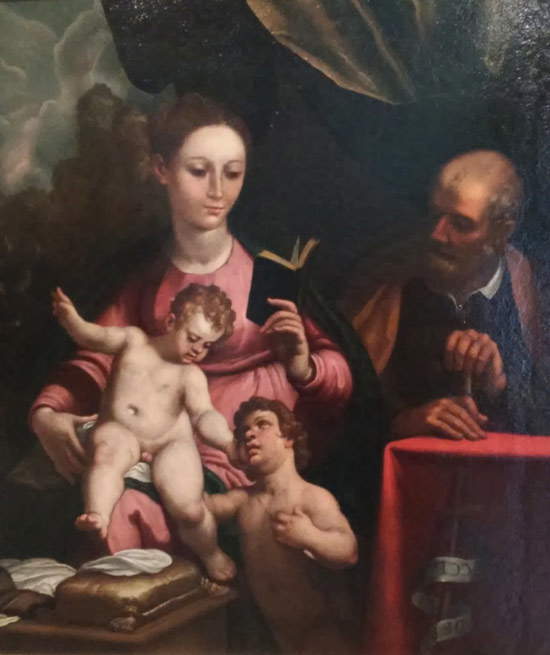 |
| Bernardo Castello, Holy Family with St. John (late 16th cent.-early 17th cent.; oil on canvas, 115 x 100 cm; Genoa, Palazzo Rosso) |
Let us briefly delve into some of the works. We had already dealt with Cesare Corte (Genoa, 1550 - after 1619) in an article dedicated to him: an artist condemned by the Inquisition for heresy, he was actually a painter whose heterodoxy is hardly detectable from his works, all the more so from the one belonging to the core of the Brignole-Sale collection. It is a Madonna and Child of a purely devotional character, almost certainly intended for private enjoyment, which in nothing deviates from orthodoxy, all the more so since we are in the age of the Counter-Reformation and the prescriptions that the Church imparted to artists wanted works that were easy to read, that would move the faithful to feel pious and devout feelings. Such is the case with this painting, of extreme simplicity even for Cesare Corte himself who, of the Genoese painters of the time, was certainly among the least innovative and among the closest to tradition. A painting so traditional that for a long time it was considered simply as a painting of the “Genoese school,” without anyone trying to provide a name for the author. It is one of the paintings that have undergone the cleaning operation and, in all likelihood after the Madonna of Lazzaro Calvi (because it cannot be dated with certainty), is the oldest work in the nucleus.
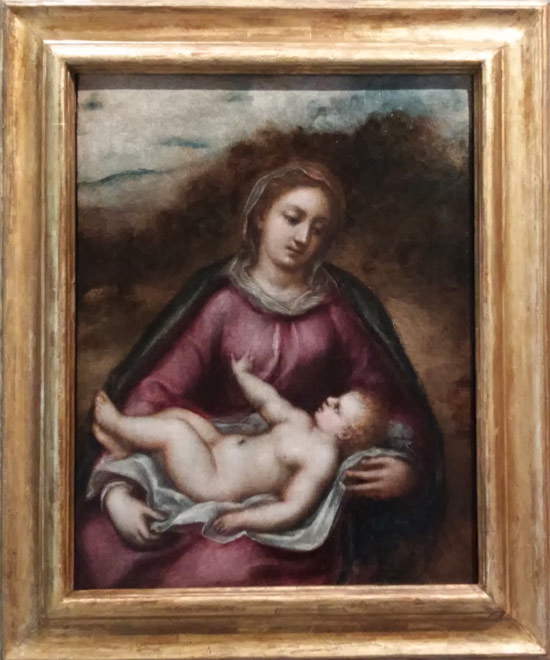 |
| Cesare Corte, Madonna and Child (late 16th cent.; oil on canvas, 68 x 45 cm; Genoa, Palazzo Rosso) |
By Carlo Tavella (Milan, 1668 Genoa, 1738) three landscapes have been mentioned in the nucleus. The two main ones, Wooded Landscape with a Pond and Lake Landscape, are two complementary, pendant works, of which, moreover, drawings also exist. Tavella was a painter accustomed to depicting landscapes such as these, Arcadian scenes in which the places described seem more imaginary and ideal than real (and in fact these are not real views): in the first canvas in the Brignole-Sale collection we see, immersed in an evocative lush forest, the members of a family of shepherds, with the mother nursing an infant and the father kneeling in front of them to watch the scene. Further back, some fishermen cast reeds in a placid pond, and a pair of shepherds lead their cattle down a path in the middle of a clearing. Above a hill, silhouetted against clouds veiled in orange by the onset of sunset, looms an ancient castle. In the other painting, in the foreground, a mother with her child leads a flock of sheep to the shores of a lake overlooked, on the left, by a village, which is ploughed in the background by some boats. Further back, two more shepherds rest in the shade of a tree. These are luminous, delicate, serene landscapes, illuminated by a clear light, which recall the experiences of Gaspard Dughet and the equally idyllic landscapes of the Roman but French-born painter, whose works were carefully studied by Carlo Tavella. Relaxing works, we might say, by a painter skilled in depicting landscapes in which man and nature live in close and fruitful contact.
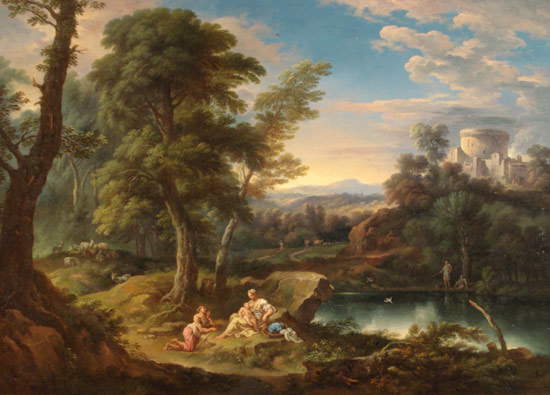 |
| Carlo Tavella, Wooded Landscape with a Pond (c. 1710-1720; oil on canvas, 99 x 137 cm; Genoa, Palazzo Rosso) |
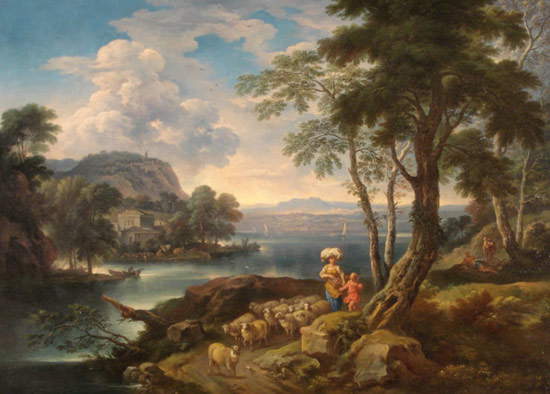 |
| Carlo Tavella, Lacustrine Landscape (c. 1710-1720; oil on canvas, 99 x 137 cm; Genoa, Palazzo Rosso) |
Finally, the 16th-century Venetian school’s Penitent Magdalene deserves a final notation. In fact, the painting was presented not when the restoration was completed, but in the start-up phase: this is for didactic and informative purposes. The dowels we observe in the work, which are marked with numbers ranging from 1 to 3, indicate different degrees of cleaning, with the highest number indicating the most advanced level of cleaning, and it can easily be seen that, at the dowels marked precisely with the number 3, the colors are brighter, but that the paint layer shows deterioration (most noticeable at the draperies and clouds). It was thus discovered that the work had been completely repainted to remedy the impairment of the original painting: for this reason the restorers decided to stop the work, that is, because, by eliminating the repainting, in all likelihood the full legibility of the work could not have been guaranteed, given the state in which the underlying layer of paint was in.
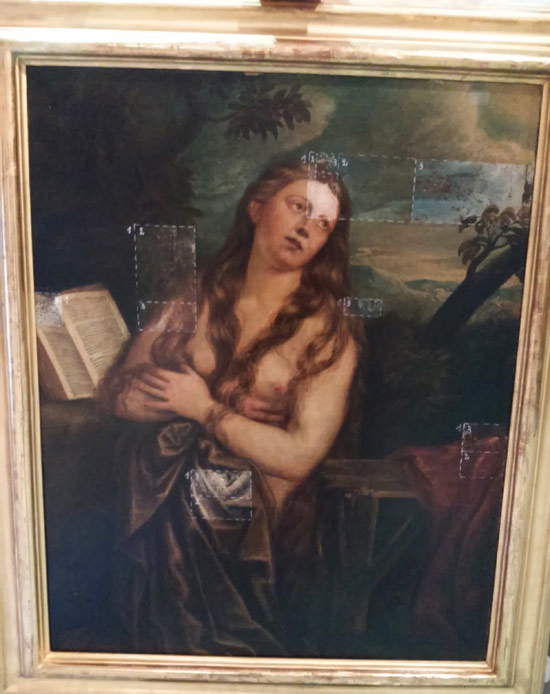 |
| Venetian School, Penitent Magdalene (late 16th century; oil on canvas, 124 x 110 cm; Genoa, Palazzo Rosso) |
In conclusion, we can say that the project that has seen the collaboration of Palazzo Rosso and Studio Legale Rubini is a beautiful episode that has written an important page of Genoese culture (and not only): we feel we can say that it is the demonstration of how public and private can create synergies without imbalances, imbalances and clamor, and that from operations of this kind can arise opportunities truly for everyone, remembering that the benefit of citizens should always be the first objective to be pursued by all the actors called upon. In this case, this was indeed the case, and we congratulate those who made possible the “return” of the paintings to the Palazzo Rosso itinerary, allowing all the works of the Brignole-Sale collection donated to the city of Genoa in 1874 to be shown to the public in full.
Warning: the translation into English of the original Italian article was created using automatic tools. We undertake to review all articles, but we do not guarantee the total absence of inaccuracies in the translation due to the program. You can find the original by clicking on the ITA button. If you find any mistake,please contact us.





























